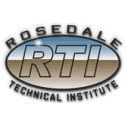What do they do?
Repair and open locks, make keys, change locks and safe combinations, and install and repair safes.
Also known as:
Certified Master Locksmith (CML), Certified Master Safe Cracker, Certified Master Safecracker (CMS), Forensic Locksmith, Lock Technician, Locksmith, Registered Safe Technician (RST), Road Service Locksmith, Safe Technician, Vault Technician
-
-4.1%
Change
Ranks #51 in job growth rate40Job Openings
Ranks #19 in net job growth
Looking for colleges that offer a specific major? Use the College Match Tool to find your best-matched schools and discover your estimated Net Price!
- High school diploma equivalent (48%)
- Some college, no degree (28%)
- Associate's degree (9%)
- Bachelor's degree (9%)
- Less than high school diploma (5%)
- Master's degree (1%)
- Doctorate or Professional Degree (<1%)
People in this career often know a lot about:
- Mechanical - Knowledge of machines and tools, including their designs, uses, repair, and maintenance.
- Customer and Personal Service - Knowledge of principles and processes for providing customer and personal services. This includes customer needs assessment, meeting quality standards for services, and evaluation of customer satisfaction.
- Public Safety and Security - Knowledge of relevant equipment, policies, procedures, and strategies to promote effective local, state, or national security operations for the protection of people, data, property, and institutions.
- English Language - Knowledge of the structure and content of the English language including the meaning and spelling of words, rules of composition, and grammar.
- Sales and Marketing - Knowledge of principles and methods for showing, promoting, and selling products or services. This includes marketing strategy and tactics, product demonstration, sales techniques, and sales control systems.
People in this career often have talent in:
- Finger Dexterity - The ability to make precisely coordinated movements of the fingers of one or both hands to grasp, manipulate, or assemble very small objects.
- Control Precision - The ability to quickly and repeatedly adjust the controls of a machine or a vehicle to exact positions.
- Arm-Hand Steadiness - The ability to keep your hand and arm steady while moving your arm or while holding your arm and hand in one position.
- Near Vision - The ability to see details at close range (within a few feet of the observer).
- Oral Expression - The ability to communicate information and ideas in speaking so others will understand.
- Deductive Reasoning - The ability to apply general rules to specific problems to produce answers that make sense.
- Information Ordering - The ability to arrange things or actions in a certain order or pattern according to a specific rule or set of rules (e.g., patterns of numbers, letters, words, pictures, mathematical operations).
People in this career often do these activities:
- Cut materials according to specifications or needs.
- Disassemble equipment for maintenance or repair.
- Repair worn, damaged, or defective mechanical parts.
- Fabricate parts or components.
- Drill holes in parts, equipment, or materials.
- Install hardware or other interior fixtures.
- Replace worn, damaged, or defective mechanical parts.
- Set equipment guides, stops, spacers, or other fixtures.
- Document operational activities.
- Disable door locks.
- Repair structural components.
- Assemble electrical components, subsystems, or systems.
- Refinish wood or metal surfaces.
This page includes data from:

 Occupation statistics: USDOL U.S. Bureau of Labor Statistics Occupational Employment Statistics
Occupation statistics: USDOL U.S. Bureau of Labor Statistics Occupational Employment Statistics
 Videos: CareerOneStop, USDOL/ETA and the Minnesota Department of Employment & Economic Development
Videos: CareerOneStop, USDOL/ETA and the Minnesota Department of Employment & Economic Development




























